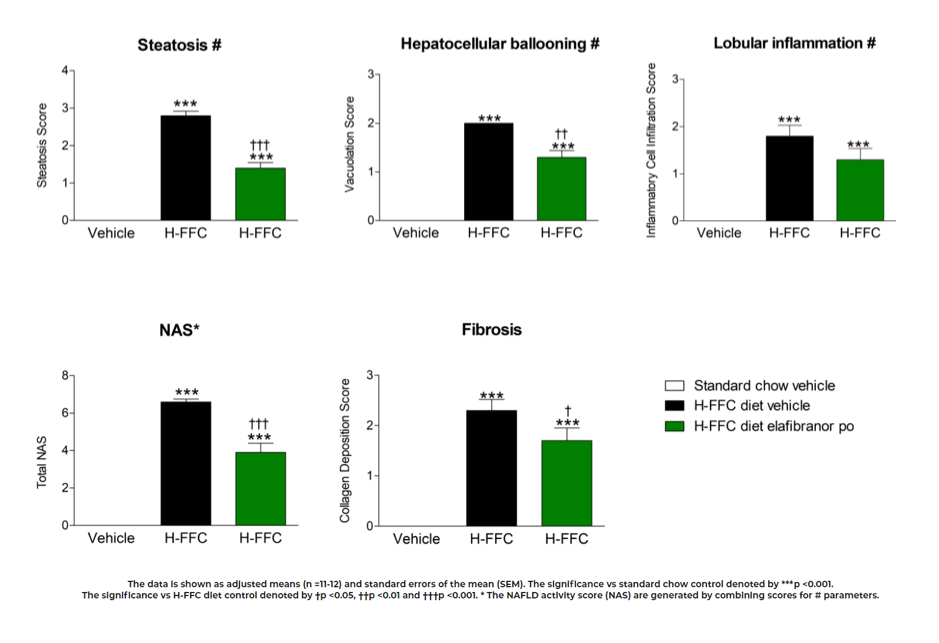H-FFC mouse model of NASH and fibrosis
Non-alcoholic steatohepatitis (NASH) and liver fibrosis are associated with an increased risk of developing hepatocellular carcinoma and ultimately end-stage liver disease. In the clinic NASH is often accompanied with metabolic syndrome, specifically obesity, type 2 diabetes and dyslipidaemia. Animal models which combine the histological changes in the liver alongside the metabolic drivers of the disease are important to advancing our understanding of the potential of therapies in the clinic.
The H-FFC mouse model offers the histological changes associated with NASH and fibrosis within a 12-week period in an overweight mouse. This model therefore includes some of the metabolic aspects of NASH and fibrosis in man alongside the histological changes to the liver allowing the testing of compounds which act upstream of fibrotic changes.
H-FFC mice are maintained on a diet high in fat, fructose and cholesterol for 12 weeks which results in an increase in the following parameters:
- Plasma levels of liver enzymes (ALT and AST)
- Liver hydroxyproline and lipids
- Histological endpoints of NASH (for example, steatosis, hepatocellular ballooning and lobular inflammation) and fibrosis
The dual PPAR alpha /delta agonist, elafibranor reduces or inhibits many of the features of NASH and fibrosis in the H-FFC mouse model. This demonstrates its usefulness as a model to identify potential treatments of NASH and fibrosis.
The H-FFC mouse develops a robust NASH and fibrosis phenotype which can be inhibited by elafibranor

The data is shown as adjusted means (n =11-12) and standard errors of the mean (SEM). The significance vs standard chow control denoted by ***p <0.001.
The significance vs H-FFC diet control denoted by †p <0.05, ††p <0.01 and †††p <0.001. * The NAFLD activity score (NAS) are generated by combining scores for # parameters.
Elafibranor inhibits the formation of bridging fibrosis in the H-FFC mouse

Representative images of sirius red stained liver sections, magnification x10 demonstrating the difference between the vehicle, H-FFC mouse and H-FFC Elafibranor po qd groups
